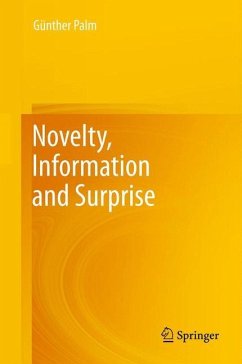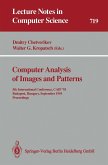The book offers a new approach to information theory that is more general then the classical approach by Shannon. The classical definition of information is given for an alphabet of symbols or for a set of mutually exclusive propositions (a partition of the probability space ) with corresponding probabilities adding up to 1. The new definition is given for an arbitrary cover of , i.e. for a set of possibly overlapping propositions. The generalized information concept is called novelty and it is accompanied by two new concepts derived from it, designated as information and surprise, which describe "opposite" versions of novelty, information being related more to classical information theory and surprise being related more to the classical concept of statistical significance. In the discussion of these three concepts and their interrelations several properties or classes of covers are defined, which turn out to be lattices. The book also presents applications of these new concepts, mostly in statistics and in neuroscience.
From the reviews:
"In this interesting book, the author extends classical Shannon information theory to include the subjective element of interestingness, novelty or surprise. ... A theory of novelty and surprise is developed in this book to provide a brief and comprehensive exposition of classical information theory ... . all the chapters have exercises, and so this book can be used as an undergraduate/graduate textbook. Since each chapter contains a decent number of references ... readers can find research problems from those references." (Yûichirô Kakihara, Mathematical Reviews, July, 2013)
"In this book the author introduces (subjective) notions of interestingness, novelty and surprise of messages employing probality spaces ... . The book is easy to read and does not require strong mathematical background, thus it could be used as a textbook or as material for self-study in graduate or post-graduate courses." (Jaak Henno, Zentralblatt MATH, Vol. 1257, 2013)
"In this interesting book, the author extends classical Shannon information theory to include the subjective element of interestingness, novelty or surprise. ... A theory of novelty and surprise is developed in this book to provide a brief and comprehensive exposition of classical information theory ... . all the chapters have exercises, and so this book can be used as an undergraduate/graduate textbook. Since each chapter contains a decent number of references ... readers can find research problems from those references." (Yûichirô Kakihara, Mathematical Reviews, July, 2013)
"In this book the author introduces (subjective) notions of interestingness, novelty and surprise of messages employing probality spaces ... . The book is easy to read and does not require strong mathematical background, thus it could be used as a textbook or as material for self-study in graduate or post-graduate courses." (Jaak Henno, Zentralblatt MATH, Vol. 1257, 2013)








